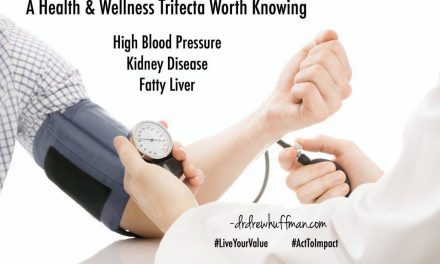What is Parathyroid Disease and Should We Know About It?
Parathyroid imbalance, or ‘disease’ if you will, is either an excessive or inadequate release of parathyroid hormone. Like Diabetes and thyroid disease, parathyroid disease can produce some similar symptoms as those seen by conditions that Rheumatologist treat (such as Rheumatoid Arthritis, Lupus, Osteoporosis, and Fibromyalgia). Why is that important? Well, simple: failure to appreciate the exact source of our complaints delays the appropriate treatment and prolongs those physical imbalances. That can make it difficult for you to #LiveYourValue. Furthermore, just like the other two endocrine problems mentioned, in some cases, there are choices that we can make that might very well help us avoid parathyroid problems altogether.
The primary thing to remember about parathyroid hormone is its action to regulate the amount of Calcium in our blood. When the level of Calcium in our blood is low, parathyroid hormone will be released (i.e., higher than normal) in an effort to ‘normalize’ our blood Calcium level.
The two most important causes of excess parathyroid hormone release, in my opinion, are low level of Calcium in the blood and a parathyroid adenoma (benign tumor of our parathyroid gland). As of right now, we don’t exactly know why people develop parathyroid adenomas. However, we do know many things that can lead to a low blood calcium level. Remember, we don’t make Calcium, so we have to get it through our diet.
What Leads to a Low Blood Calcium Level?
- Inadequate dietary intake of Calcium
- Vitamin D deficiency (we need Vitamin D to absorb calcium from the food that we eat and supplements we take, so if we have a low Vitamin D we won’t absorb Calcium appropriately and our Calcium blood level can fall)
- Lack of sunshine exposure (need sunshine to convert inactive Vitamin D to active Vitamin D)
- Excessive alcohol use
- Chronic renal failure
- Magnesium deficiency
- Intestinal Malabsorption / Gluten sensitivity
- Biphosphonate therapy – such as Alendronate (Fosamax), Risedronate (Actonel), Ibandronate (Reclast)—drugs used to treat high blood calcium levels or pills used to treat osteoporosis.
- Steroids
- Antacids
- Certain types of leukemia or blood disorders
- A complication of chemotherapy, tumor lysis syndrome, occurs when your body breaks down tumor cells rapidly, after chemotherapy.
- Loop diuretics (or water pills like Lasix), estrogens replacement therapy, fluorides, glucose, insulin, excessive laxative use, and magnesium may also lead to hypocalcemia.
- Certain things in your diet – sugar, caffeine, phosphates (found in soda pop)
- Certain antibiotics may make it difficult for you to absorb calcium.
In either case of parathyroid disease, with an adenoma or because we have a low Calcium, the symptoms that we get from it are largely a result of Calcium and, in particular, an attempt to increase the amount of Calcium in our blood by pulling it from other places.
A few very common complaints that Parathyroid Disease can result in that can be mistaken for a Rheumatology source include:
- Bone pain, thin bones, osteoporosis, and fractures—parathyroid hormone will pull Calcium from our bones which makes them weaker.
- Muscle pain, muscle weakness – again, due to Calcium’s role in muscle contraction
- Fatigue / Not feeling well – #1 compliant of those with parathyroid disease
- Thinning of hair
- Brain fog, poor concentration, depression
Parathyroid disease can create many other issues such as kidney stones, heart disease/high blood pressure/irregular heart rate, and constipation. And all of them for the most part, are the result of a Calcium imbalance.
Right now there is nothing that we know of that will prevent the formation of a parathyroid adenoma causing an excessive amount of parathyroid hormone to be secreted in our bodies. However, when it comes to maintaining a normal blood Calcium level through the choices we make, #LiveYourValue can not only help correct a low blood Calcium level but help sustain a normal level. And remember, it’s a low Calcium blood level that often causes creates a parathyroid issue.
The Connection Between #LiveYourValue and Parathyroid Disease
First, since we can’t make Calcium and have to get it through our diet, our nutritional choices are very important. (We’ll hear more from my in-house functional nutritional therapist, Karey Thomas, FNTP about this in her next post.)
Next, we can make the choice to keep an eye on our Vitamin D and get some (10–30 minutes of midday sunlight with arms and legs exposed, three times weekly if possible). Remember, we need Vitamin D to absorb the calcium we consume. Furthermore, we need sunlight to convert inactive Vitamin D to active Vitamin D. So, on beautiful days, getting outside and going for a walk, a jog, playing tennis, or golf will do more than increase our serotonin, endorphins, and dopamine . . . it will increase our Vitamin D and keep our Calcium normal. Don’t forget, sunscreen greater than SPF30 blocks the UV sun rays needed for Vitamin D.
Lastly, we can make the choice to limit our alcohol. Chronic, excessive alcohol use (which is defined as consuming eight drinks or more per week for women, and 15 or more for men), causes the body to excrete more Magnesium than normal which subsequently lowers our blood Calcium level. Chronic, excessive alcohol use also decreases the absorption of Calcium from our intestine making a low blood Calcium more likely.
Final Thoughts on Parathyroid Disease
So, when it comes to bone pain, muscle pain, muscle cramps or weakness, fatigue, constipation, depression . . . maybe we can make the choices listed above. This will not only move us closer to #LiveYourValue, but also resolve some unwanted symptoms that have been preventing us from living the life we want.
Remember, today and every day, live your value one choice at a time. You and your body will be thankful you did.










